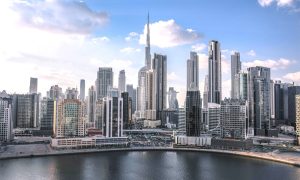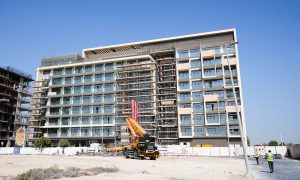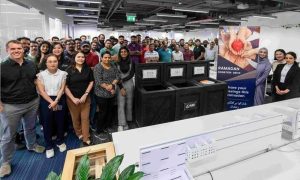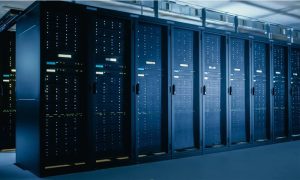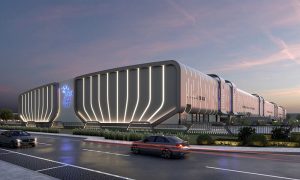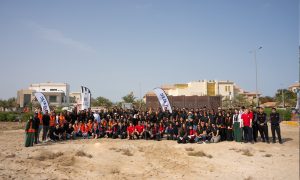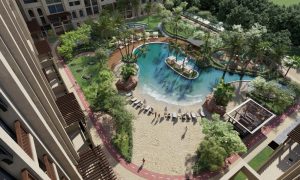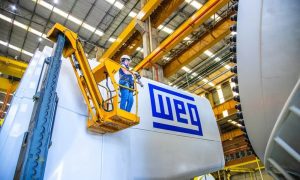Sealing the deal
Despite issues surrounding quality assurance, cash flow and the environmental impact of adhesives, the regional industry is poised for strong growth over the coming years
What was the most significant industry trend to emerge in 2010?
Laith Haboubi: We realised that so many projects had been finished using substandard materials over the past few years. Developers, owners and tenants alike are all currently suffering from the choices made previously. For example, de-bonding tiles, chipped edges on stone installations and waterproofing failures.
Abdallah Massaad: With sustainable projects surviving the economic downturn, 2010 signalled a year of hope for the Middle Eastern construction market.
Anton van Beek: We serve a number of different end markets, but the most striking trend we see is an increasing need for solutions focused on meeting specific regional needs. Our own business was set up in 2010 to serve the growing needs of Europe, the Middle East and Africa (EMEA). We are finding that having a great and broad portfolio of products is not enough — understanding and then meeting specific market needs is powerful for us and our customers.
[facts]
THE PANEL
Laith Haboubi
Business development director,Mapei UAE, Mapei
Stefan Carpentier
Middle East area manager, Bostik
Abdallah Massaad
Director, Laticrete RAK
Anton Van Beek
European general manager-packaging and converting business, The Dow Chemical Company
[/facts]
How do you predict this will develop in 2011?
LH: The market has undergone a rapid rise to maturity helped by two factors; an increased number of more discerning investors and reduced profit margins for contractors. Reduced profits result in greater care in material selection and installation as people don’t have the margins or resources to be going back over failed work.
AM: The New Year will see many shifts in terms of the quality of projects, as well as technology to suit the new reality.
AVB: There is no doubt that this trend will continue and that companies that understand this will win in the marketplace; as long as they always keep customers in mind. The needs of the EMEA region are growing, and we are making sure we have resources in place to meet these needs for advanced adhesive technologies in industrial applications, as well as markets like food packaging.
What are the primary issues in the industry currently?
LH: Costs and cash flow. We find that projects are continuing, but at a much slower pace than they were before.
[facts]
70%
The amount of its budget MAPEI contributes to research and development studies
[/facts]
Stefan Carpentier: The slowdown has allowed consultants, designers and engineers to assess alternative solutions and manufacturers are focusing more on providing these. Sustainability became another key requirement for new projects. Scoring LEED credits or Estidama Pearls takes a solid approach to design and writing specifications accordingly, for example with low-VOC products.
AM: The primary issue in the construction industry today is the direction it will take in the future. Finance will decide the commercial viability of many projects.
We are making sure we have resources in place to meet the needs for advanced adhesive technologies in industrial applications”
AVB: Bigger, better and more dramatic buildings are the norm. This region is setting the pace for some of the most dramatic architecture in the world. However, the primary issue underlying this significant growth is the ability for the construction industry to be able to find a source of secure, sustainable products from reliable suppliers that can deliver consistent quality time after time.
Does the market demand exist to make the research and development (R&D) of sustainable products viable?
LH: With many projects requiring LEED or Estidama ratings, there is a positive local. However, R&D of such products is a long-term investment and companies should not expect short-term returns. Mapei invests more than 70% of its €85 million research and development budget into the development of sustainable or more environmentally-friendly products for more than 10 years.
SC: It is part of our mission statement to invest in R&D. Locally, we see specifications gradually changing in favour of eco-friendly and sustainable products. Bostik has a broad view and focuses on the entire lifecycle of a product, from transportation and application on site, to the ease of recycling afterwards.
AM: Currently, research and development in sustainable products is not a compulsion; however, very soon there will be no option but to go for sustainable products. The companies investing today for tomorrow’s solution will eventually become the industry leaders.
[facts]
€85m
Mapei’s total budget dedicated to research and development in its sector
[/facts]
What are the unique issues of working in this region compared to others?
LH: There is a lack of unified standards or building codes, but there have been some positive developments, such as the adoption of ISO 13007 by the Gulf Standards organisation for tile adhesives and grouts. This will go a long way to improving material and application for tile and stone installation. It will also set a benchmark for such materials as they are tested to temperatures relevant to the region.
SC: The culture here is one of relations and trust, where one has to rely on the other’s knowledge and capability to keep up with the pace of growth. This is different to mature markets, which are frequently underestimated by foreign companies coming here. Additionally, durability and performance requirements for materials aren’t simply the same as in other parts of the world.
AM: The Middle East has its unique climatic needs and construction products and practices need to be practical in this climate. Laticrete RAK has started local production to develop products exclusively for this region.
Are there any outstanding innovations the industry is focusing on?
?So many projects had been finished using substandard materials over the past few years”
LH: We follow trends very closely in order to supply the correct solutions. We are seeing an increase in the use of resin agglomerate (artificial stone) and also larger format tiling, particularly in porcelains. These do require different adhesives and installation systems; otherwise, the risk of staining or warping is high.
SC: As a manufacturer we anticipate and rethink technologies; there is a clear move away from solvent products. The challenge of innovation is to develop economically-viable alternatives exceeding the performance of older technology and improving user friendliness. The demand for waterbased epoxies is increasing, the use of polysulfide sealants is gradually being reduced and hot melts and MS Polymers are finding their way to the market more and more.
AM: Due to the rapid pace of construction, many products need to be lightweight, green and fast setting. Laticrete is working on an energy-saving, ventilated facade system and has produced VOC-free and low-VOC products, and HydroBan waterproofing products, which can actually be tested on the day of application.
Have recent innovations in the industry shifted demand in the adhesives market?
LH: We have seen an increased demand for acoustic systems; rubber or cork and rubber composites installed under tiled or wooden flooring. It’s a very positive innovation, dramatically reducing the sound transmitted between floors.
SC: Sustainability of a project is getting a clearer meaning. Projects are designed to be green, not to carry the stamp of a green development but from the perspective of improving health and minimising energy consumption. Specifications on projects for adhesives are getting more stringent, imposing upper limits for volatile components.
